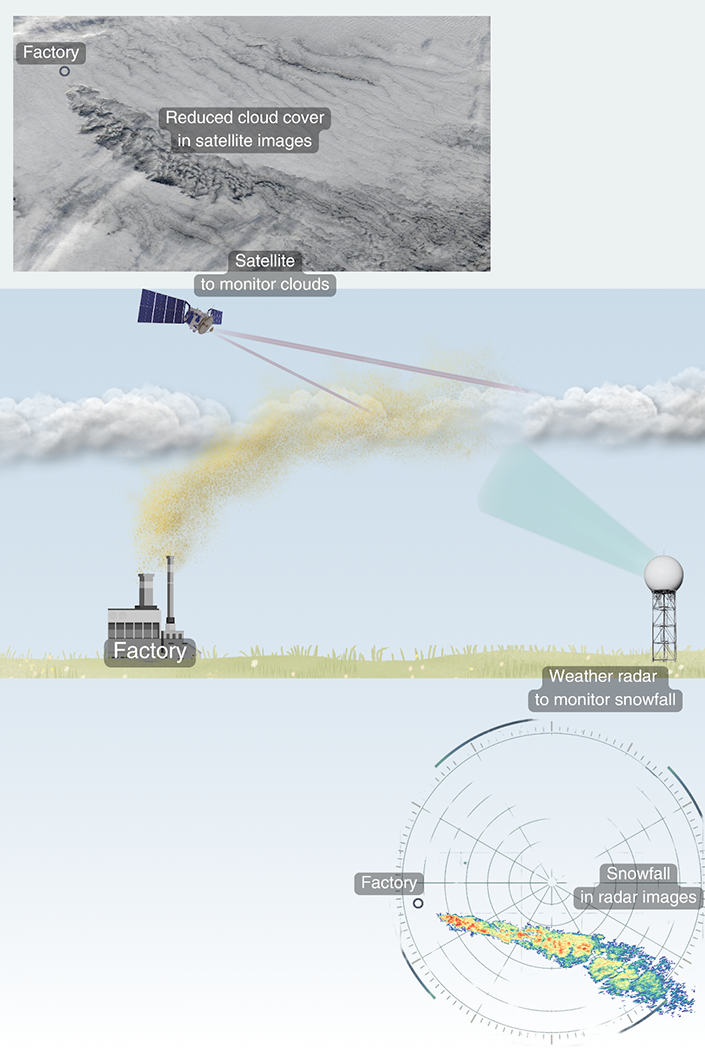2024-11-15 カリフォルニア大学サンディエゴ校(UCSD)

A graphic showing how reduced cloud cover and increased snowfall were observed downwind of an industrial air pollution hotspot. Credit: Velle Toll
<関連情報>
- https://today.ucsd.edu/story/industrial-pollution-can-increase-snowfall-and-reduce-cloud-cover
- https://www.science.org/doi/10.1126/science.adl0303
産業エアロゾルホットスポットにおける液体雲の氷河化、降雪、雲量減少 Glaciation of liquid clouds, snowfall, and reduced cloud cover at industrial aerosol hot spots
Velle Toll, Jorma Rahu, Hannes Keernik, Heido Trofimov, […], and Nicolas Bellouin
Science Published:14 Nov 2024
DOI:https://doi.org/10.1126/science.adl0303
Editor’s summary
The formation of ice from supercooled cloud water droplets has large effects on the radiative properties of those clouds and therefore on climate. Does anthropogenic air pollution have any impact on that process? Toll et al. have shown that it does. The authors present observations of enhanced cloud-ice formation near metallurgical and cement industries, coal-fired power plants, and oil refineries. The affected clouds back-scattered less solar radiation to space due to the combination of a reduction in cloud cover and an accompanying reduction in cloud optical thickness. This process also caused considerable induced snowfall. —Jesse Smith
Abstract
The ability of anthropogenic aerosols to freeze supercooled cloud droplets remains debated. In this work, we present observational evidence for the glaciation of supercooled liquid-water clouds at industrial aerosol hot spots at temperatures between −10° and −24°C. Compared with the nearby liquid-water clouds, shortwave reflectance was reduced by 14% and longwave radiance was increased by 4% in the glaciation-affected regions. There was an 8% reduction in cloud cover and an 18% reduction in cloud optical thickness. Additionally, daily glaciation-induced snowfall accumulations reached 15 millimeters. Glaciation events downwind of industrial aerosol hot spots indicate that anthropogenic aerosols likely serve as ice-nucleating particles. However, rare glaciation events downwind of nuclear power plants indicate that factors other than aerosol emissions may also play a role in the observed glaciation events.



